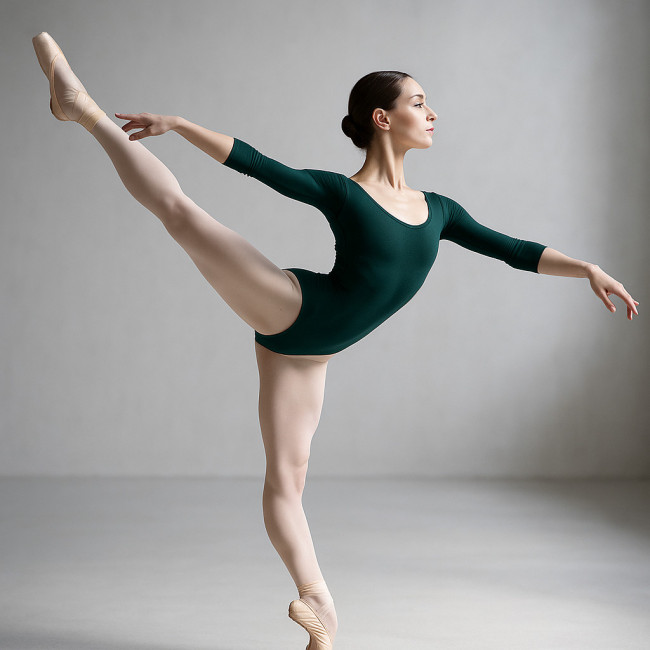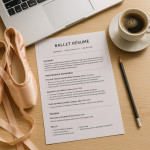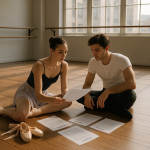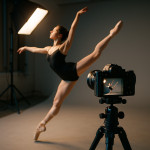Directory thumbnails that hook ballet recruiters: visual hierarchy essentials
Your ballet profile may hold full-length videos and glowing reviews, yet recruiters still decide in two seconds whether to click. That split-second judgement rests on a 180 × 240 px image: your directory thumbnail. Discover how to apply visual hierarchy so your thumbnail leaps off the results page and funnels decision-makers straight to your booking calendar.
Why thumbnails make or break ballet bookings
Recruiters scroll fast. Internal analytics from leading platforms show that thumbnails drive up to 64 % of click-throughs on dancer listings, far ahead of bio snippets or badges. A compelling thumbnail:
- Signals technical level, physique and versatility instantly.
- Differentiates you among dozens of near-identical leotards and tutus.
- Improves dwell time, which directory algorithms reward with higher ranking.
In short, mastering thumbnail design is one of the lowest-effort, highest-return moves in a performer's marketing toolkit.
Core visual hierarchy principles for ballet directory thumbnails
1. Create a dominant focal point
A recruiter's eye must land where you want it. Choose a pose with a clear silhouette—an arabesque or attitude shows turnout, line and extension in one glance. Keep backgrounds plain or softly blurred so nothing competes with your form.
2. Leverage contrast and colour separation
Directories typically display neutral UI colours. Wear a hue that pops—emerald, burgundy or classic white against mid-grey studio walls. Contrast increases edge definition, helping thumbnails remain legible even on retina screens in bright light.
3. Optimise scale and cropping
Crop mid-shin to just above the head for a full-body read without wasted pixels. Wide crops shrink your figure; tight headshots hide crucial turnout information. Maintain at least 10 px margin so platform auto-resizing doesn't chop off fingers or pointe shoes.
4. Guide eye flow with subtle diagonals
Dynamic lines—your working leg, a sweeping arm—draw attention from thumbnail border to face. Diagonals break the monotony of upright portraits and convey movement, an instant emotional trigger for dance scouts.
5. Use text overlays sparingly (if the platform allows)
A small “Principal” or “Corps de ballet” tag in a corner can save busy casting directors a click. Keep typography sans-serif, high contrast and minimum 24 pt when the image is viewed at 100 %. Never let text overlap limbs.
Step-by-step workflow: from studio shot to thumb-stopping asset

Transforming a raw studio photo into a scroll-stopping thumbnail requires more than simple cropping; it blends choreography, photography and post-production craftsmanship. Before you even press the shutter, you need absolute clarity on the emotion you wish to transmit to casting directors—poise, power or narrative intrigue. That concept then guides wardrobe colour, lens choice, lighting modifiers and even the camera's angle of attack so every inch of your line feels intentional. Once captured, a disciplined digital workflow—culling, micro-retouching, contrast balancing, adaptive sharpening and exporting to exact pixel specifications—ensures that every nuance of turnout remains crisp on mobile retina screens and 4K monitors alike. Finally, rigorous analytics testing closes the loop, turning artistic instinct into data-driven improvement that steadily lifts your click-through rate.
- Storyboard the message. Pick one speciality—classical purity, contemporary athleticism or lyrical grace.
- Shoot in RAW under even lighting. Avoid stage spotlights that cast harsh shadows inside a 1:1 thumbnail.
- Select the hero frame. Use the Rule of Thirds to keep eyes on an intersection point.
- Edit for clarity. Increase sharpness by 10 %, lift shadows slightly, and control highlights so white tutus don't blow out.
- Resize and export. Save at the platform's maximum supported size (often 1080 × 1350 px) so automatic downscaling remains crisp.
- A/B test every quarter. Swap in a fresh image and watch analytics for click-through upticks.
Pose-to-purpose matrix
| Pose choice | Message sent to recruiters | Ideal contract type |
|---|---|---|
| Pirouette en dehors freeze | Spotting focus, core control | Principal & soloist roles |
| Grand jeté split mid-air | Elevation, dynamic athleticism | Touring contemporary companies |
| Adagio arabesque penchée | Extension, flexibility | Pas de deux, lyrical choreographies |
| First position close-up | Crisp lines, foundational technique | Corps de ballet auditions |
| Character demi-pointe pose | Storytelling ability | Solo variations, narrative ballets |
Thumbnail pitfalls that repel ballet recruiters (and how to fix them)
- Busy backgrounds – Use a plain wall or seamless paper; mask out studio clutter in post.
- Muted colour palette – Add a vibrant wrap skirt or a contrasting backdrop swatch.
- Incorrect aspect ratio – Stick to 4:5 or 1:1 depending on the directory specs; avoid vertical video grabs with black bars.
- Blown-out highlights – Lower exposure by 0.3 EV and recover whites before exporting.
- Over-filtered edits – Casting teams distrust heavy presets; prioritise true-to-life skin tones.
Beyond the thumbnail: supporting assets that seal the deal
A winning thumbnail sparks interest; supporting media close the booking. Pair your new hero image with micro-audition reels and strategic gallery sequencing tips. Together, they create a cohesive first-impression funnel.
If you're pitching international companies, consider adding AR and VR portfolio demos so remote recruiters can study your technique in 360°.
Implementation timeline
Allocate one afternoon to shoot, half a day to edit, and 30 minutes to upload. Expect algorithms to recalibrate within 48 hours, after which you should see a noticeable rise in profile views on the ballet talent directory.
Quick self-assessment quiz
FAQ
- Do I need professional lighting for a thumbnail?
- Natural diffused daylight works, but controlled studio lighting ensures consistent skin tones and sharper edges.
- Should I include costumes or rehearsal wear?
- Opt for rehearsal wear that shows line unless you are targeting specific character roles; then a clean costume detail can help.
- What file format retains the most detail?
- Upload PNG where supported; otherwise, use high-quality JPEG (80 %+ quality) to balance clarity and file size.
- Can I reuse social media photos?
- Yes if they meet aspect ratio, resolution and clarity standards. Avoid watermarks or busy backgrounds common on Instagram shots.
- How quickly will recruiters notice the update?
- Most platforms refresh search thumbnails immediately. Expect increased engagement data within 48–72 hours.
Conclusion: turn curiosity into contracts
Visual hierarchy transforms a tiny rectangle into a click magnet. Apply the principles today, monitor analytics, and watch enquiry counts rise. Ready to elevate every asset—not just thumbnails? Download our free “Ballet Profile Checklist” and secure your next audition slot.











